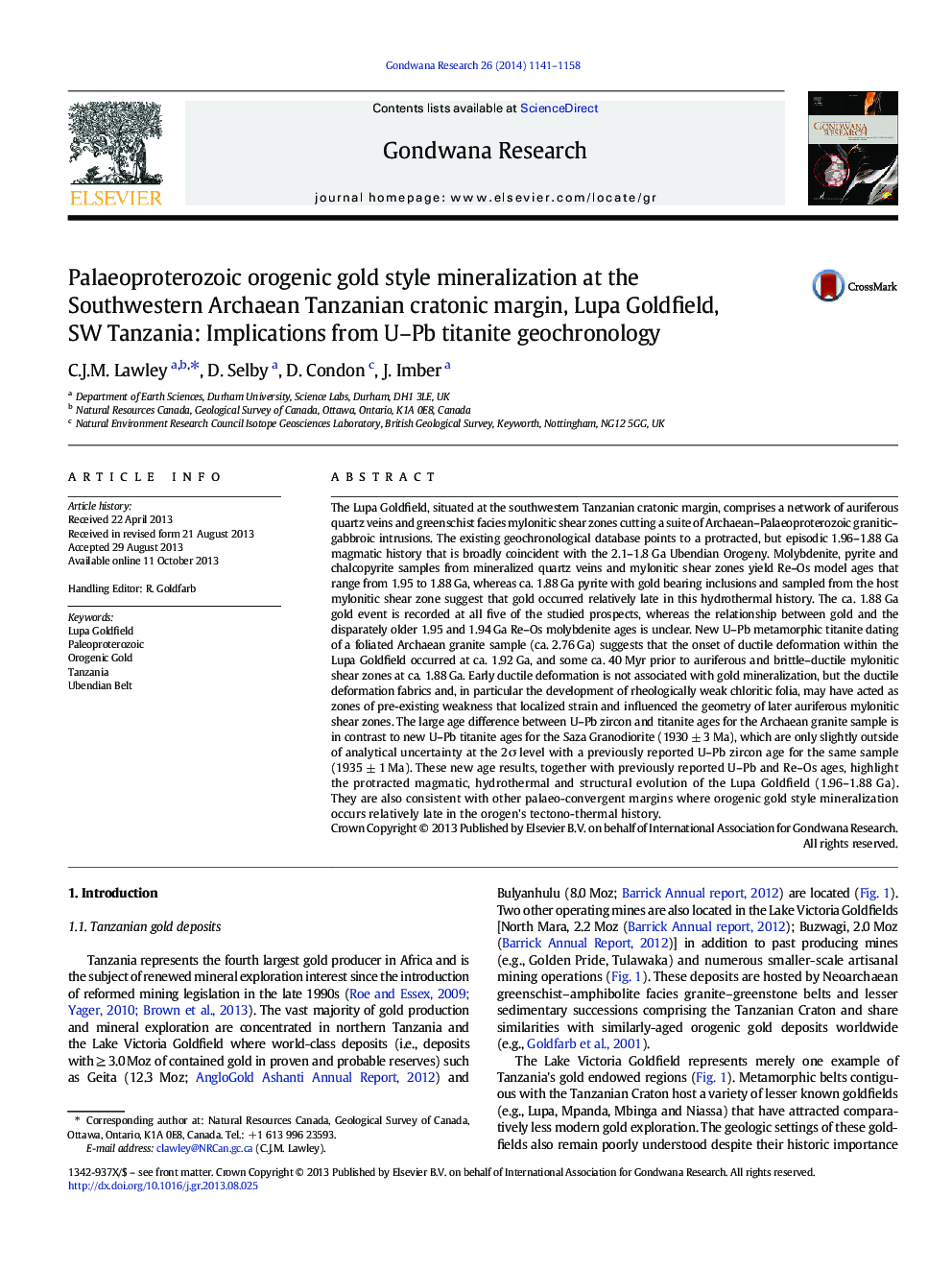| کد مقاله | کد نشریه | سال انتشار | مقاله انگلیسی | نسخه تمام متن |
|---|---|---|---|---|
| 4726845 | 1640142 | 2014 | 18 صفحه PDF | دانلود رایگان |

• Titanite ages show ductile deformation preceded auriferous mylonites by ≥ 40 Myr.
• Ductile deformation fabrics are coeval with the 2.1–1.8 Ga Ubendian Orogeny.
• New ages highlight the protracted tectono-thermal evolution of the Lupa goldfield.
The Lupa Goldfield, situated at the southwestern Tanzanian cratonic margin, comprises a network of auriferous quartz veins and greenschist facies mylonitic shear zones cutting a suite of Archaean–Palaeoproterozoic granitic–gabbroic intrusions. The existing geochronological database points to a protracted, but episodic 1.96–1.88 Ga magmatic history that is broadly coincident with the 2.1–1.8 Ga Ubendian Orogeny. Molybdenite, pyrite and chalcopyrite samples from mineralized quartz veins and mylonitic shear zones yield Re–Os model ages that range from 1.95 to 1.88 Ga, whereas ca. 1.88 Ga pyrite with gold bearing inclusions and sampled from the host mylonitic shear zone suggest that gold occurred relatively late in this hydrothermal history. The ca. 1.88 Ga gold event is recorded at all five of the studied prospects, whereas the relationship between gold and the disparately older 1.95 and 1.94 Ga Re–Os molybdenite ages is unclear. New U–Pb metamorphic titanite dating of a foliated Archaean granite sample (ca. 2.76 Ga) suggests that the onset of ductile deformation within the Lupa Goldfield occurred at ca. 1.92 Ga, and some ca. 40 Myr prior to auriferous and brittle–ductile mylonitic shear zones at ca. 1.88 Ga. Early ductile deformation is not associated with gold mineralization, but the ductile deformation fabrics and, in particular the development of rheologically weak chloritic folia, may have acted as zones of pre-existing weakness that localized strain and influenced the geometry of later auriferous mylonitic shear zones. The large age difference between U–Pb zircon and titanite ages for the Archaean granite sample is in contrast to new U–Pb titanite ages for the Saza Granodiorite (1930 ± 3 Ma), which are only slightly outside of analytical uncertainty at the 2σ level with a previously reported U–Pb zircon age for the same sample (1935 ± 1 Ma). These new age results, together with previously reported U–Pb and Re–Os ages, highlight the protracted magmatic, hydrothermal and structural evolution of the Lupa Goldfield (1.96–1.88 Ga). They are also consistent with other palaeo-convergent margins where orogenic gold style mineralization occurs relatively late in the orogen's tectono-thermal history.
Figure optionsDownload as PowerPoint slide
Journal: Gondwana Research - Volume 26, Issues 3–4, November 2014, Pages 1141–1158